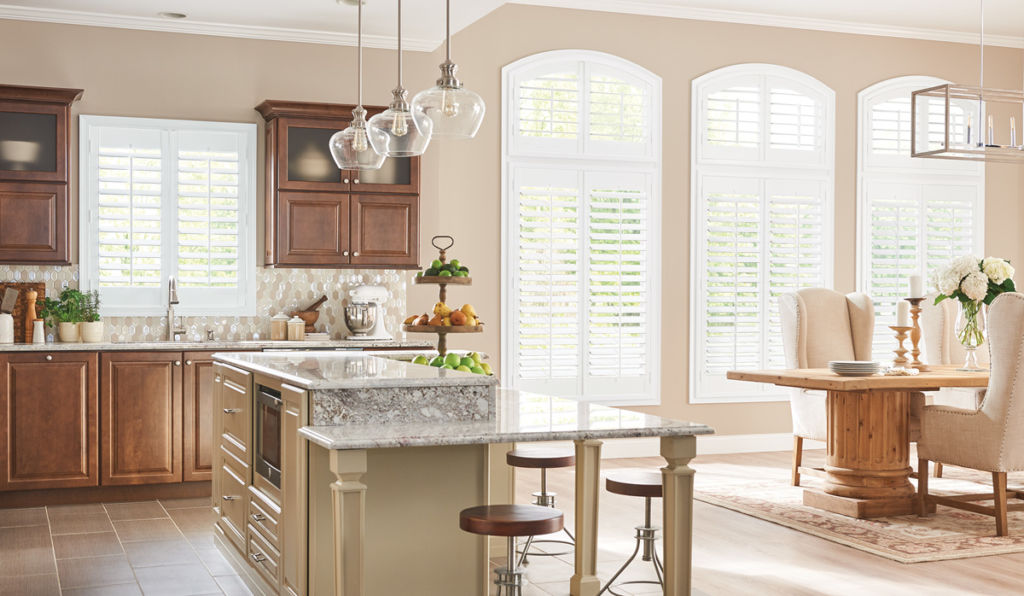
Instead of covering your windows with the usual curtains or blinds, you’ve decided that you want to upgrade your interiors with shutters. But where to start? Maybe you’re a self-proclaimed shutter expert in the market for some extra shutter resources, or perhaps the shutters vs. other window treatments debate is new to you.
What To Know When Buying Plantation Shutters
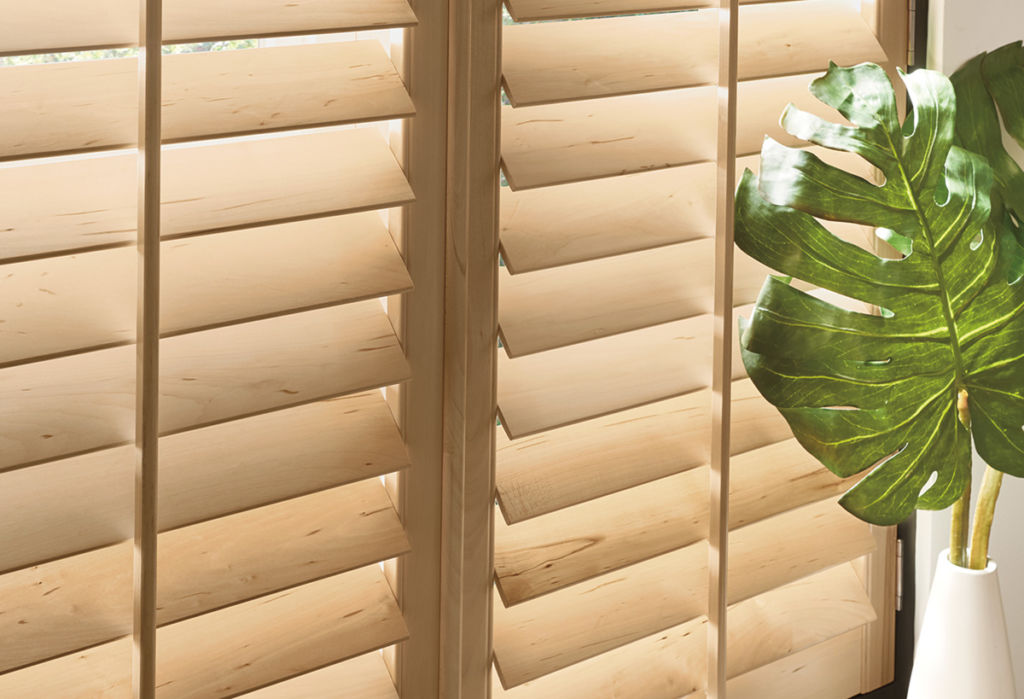
Either way, you’re in the right place. Interior shutters are classic pieces that add value and style to any home. However, choosing the right shutters for your home can be a whole process. This article will give you the rundown on all things interior shutter and tell you what you need to know about purchasing your next window treatments.
What are Shutters?
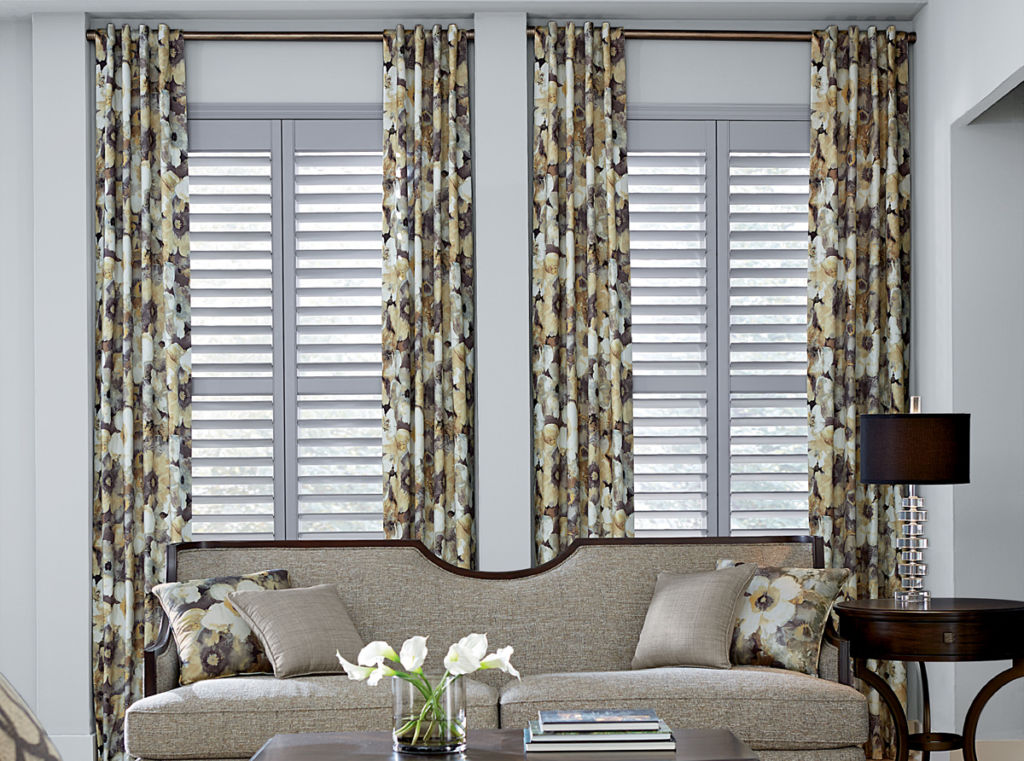
Shutters are classic and timeless window treatments consisting of doors that have panels of slats, called louvers, which can be tilted open or closed to let in sunlight. While shutters can be placed on the exterior of your home, this article will be focusing specifically on interior shutters, often referred to as plantation shutters.
📧 Never miss a post from the 3 Blind Mice blog!
Subscribe to our newsletter to receive window treatment tips, how-to, and special offers in your inbox.
"*" indicates required fields
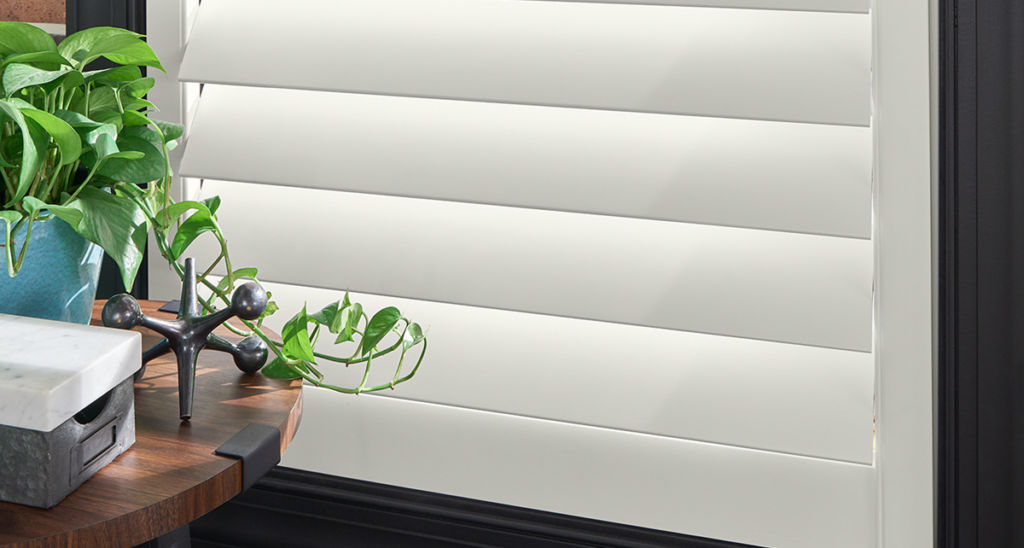
Plantation shutters can have a plethora of benefits like adding classic charm to interior spaces and allowing in the correct amount of sunlight to your home at any given time of day. Plantation shutters can be placed just about anywhere throughout the house, making great additions to kitchens, patios, or even bathrooms. However, different types of shutter are better suited for different locations.
Shutter Materials
Window shutters can be made out of a few different materials. Wood and composite shutters comprise most of what’s available on the market, but vinyl and faux wood options can also be found.
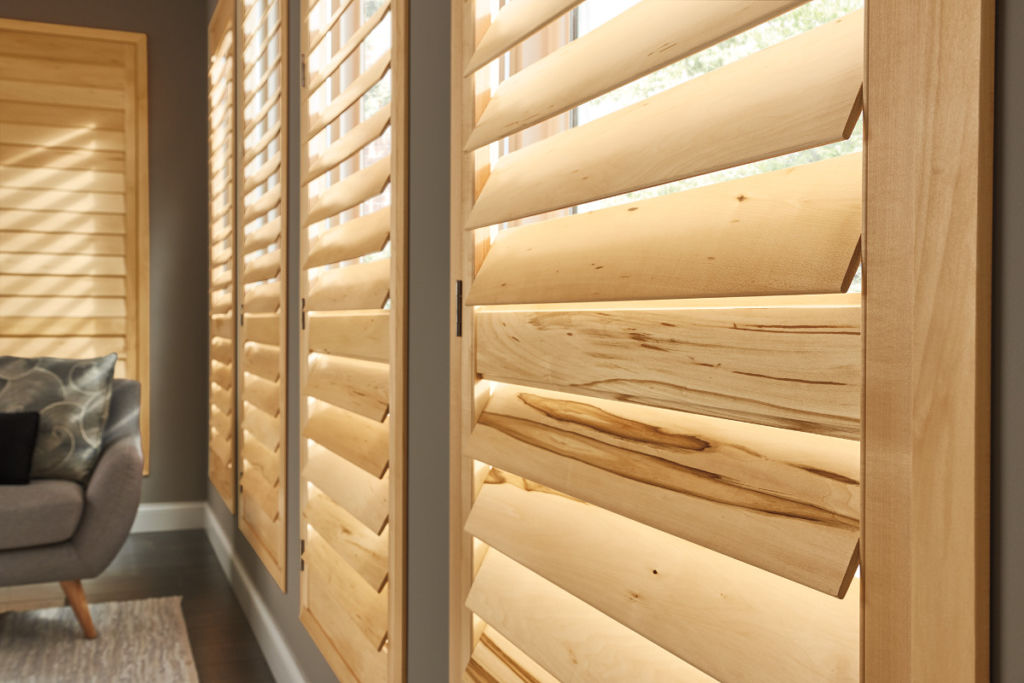
Wood
Wood shutters are the classic plantation shutter material and provide a number of benefits. Interior wood shutter can be shaped or stained to fit whatever window and aesthetic you’re looking for in your home. And, let’s be honest, nothing quite beats the natural beauty and warmth of wood grain.
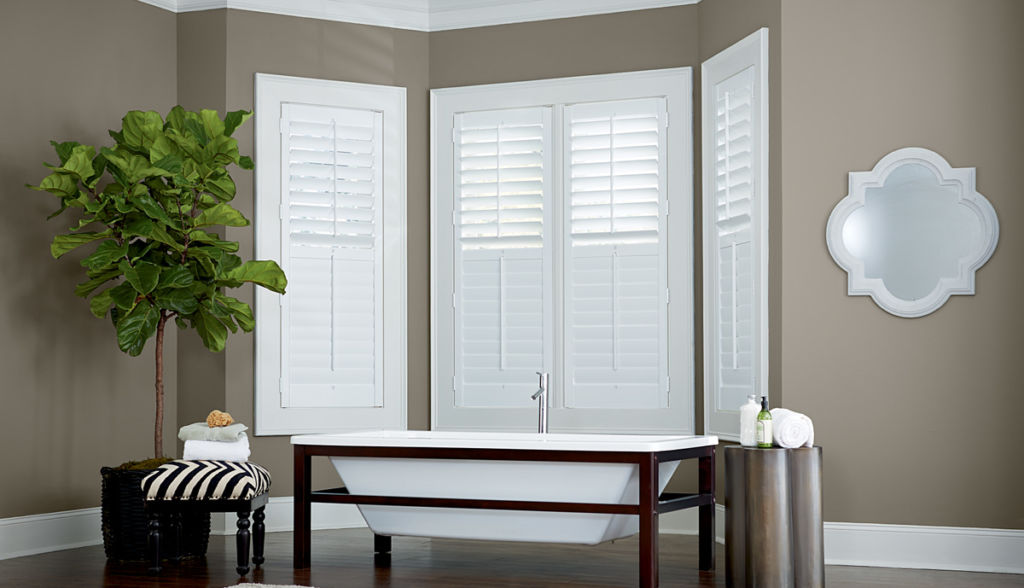
Composite
Composite shutters provide similar aesthetic boosts to a room but with added flexibility. Much like wood shutters, composite shutters can be shaped or styled to fit any window or room, but because of their composite surface, they’re more durable and can stand up to higher moisture and harsher elements like strong sunlight without warping as full wood shutters would. Composite shutters are partly made with wood but enclosed by man-made materials, usually vinyl or PVC. This means they usually cost a bit less and are lower maintenance.
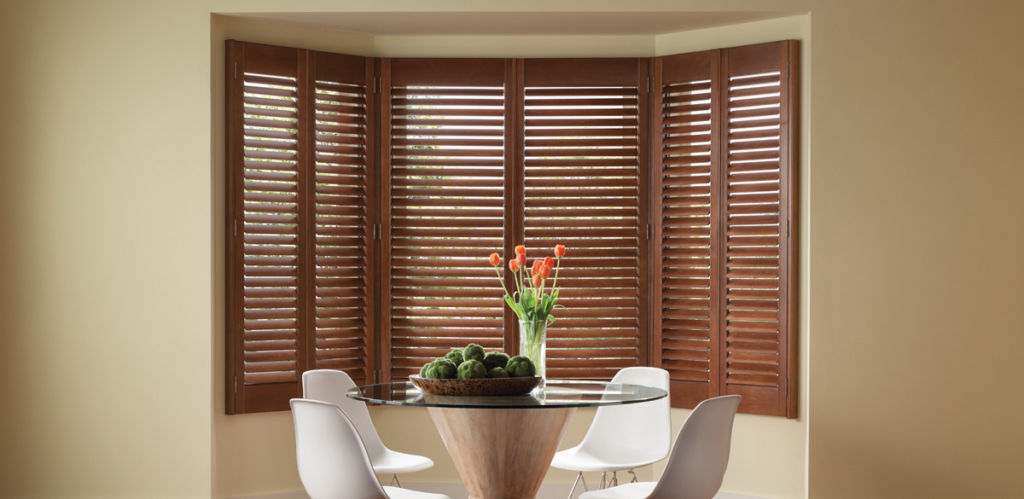
Styles of Shutter
Plantation shutters come in a variety of shapes and sizes that can be customized to fit your home. The common styles for window shutters are standard panel, café, bypass or bifold, and double hung.
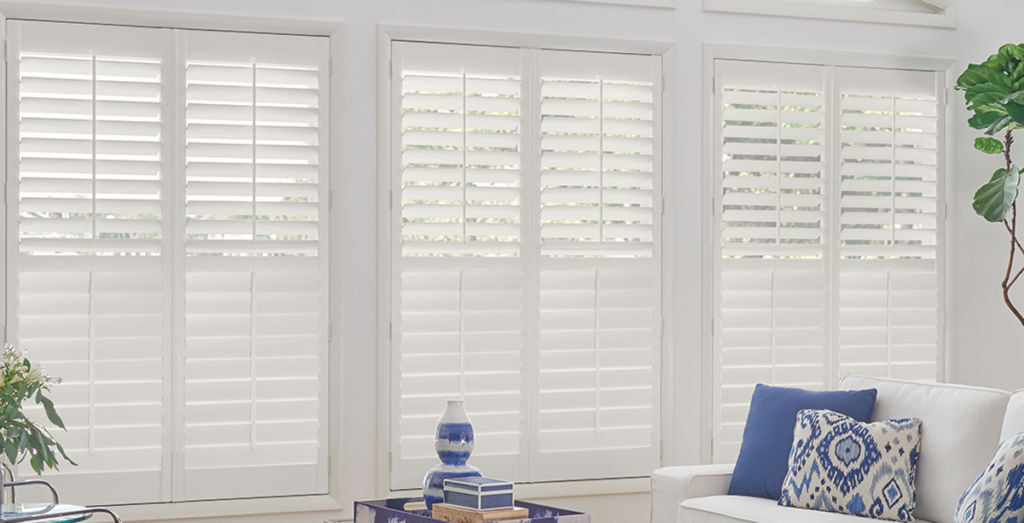
Standard Panel Shutters
Standard panel shutters are what you probably imagine regular window shutters to be. They open from the middle and have a bar that lets you open and close the louvers.
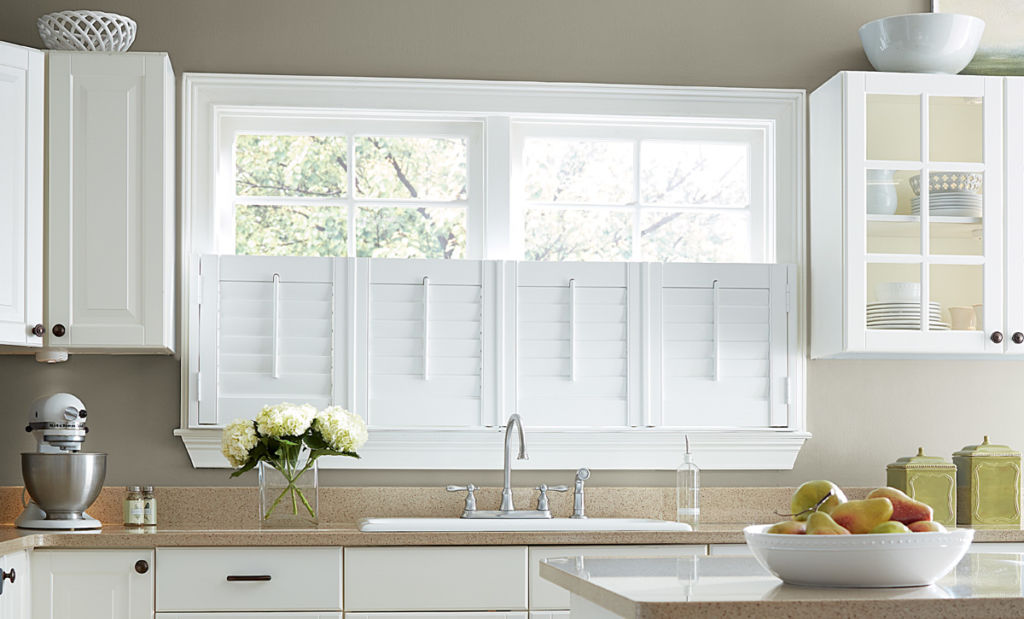
Café Shutters
Café shutters keep all the functionality of standard panel but lose the top half of the window treatment. This lets café shutters retain a good amount of privacy while allowing room to let in light and provide the occasional view. Café shutters are typically found in kitchens or breakfast areas.

Bypass and Bifold Shutters
Bypass and bifold shutters are paired together because they consolidate space in their form. Rather than having shutters that open up and out, like a door, they use a little engineering to anchor themselves on only one side of a window. Bifold shutters fold in towards one anchoring point like an accordion, while bypass shutters use a small track to open and close.
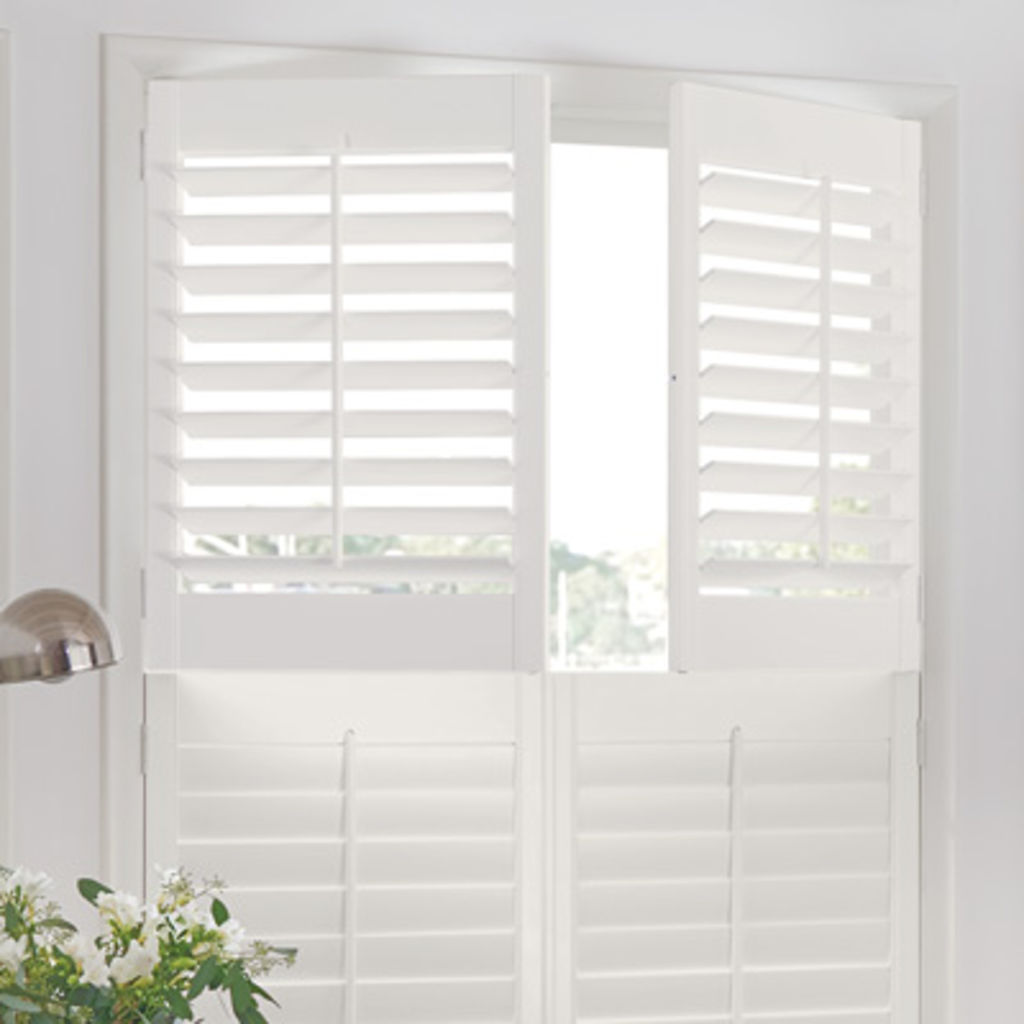
Double Hung Shutters
Double hung shutters look like standard shutters but have independently opening and closing halves. If a piece of furniture were to block the lower half of a standard shutter, it would be forced closed, but double hung shutters let you open the top half for better light access. Double hung shutters work perfectly on large windows in common areas like the living room.
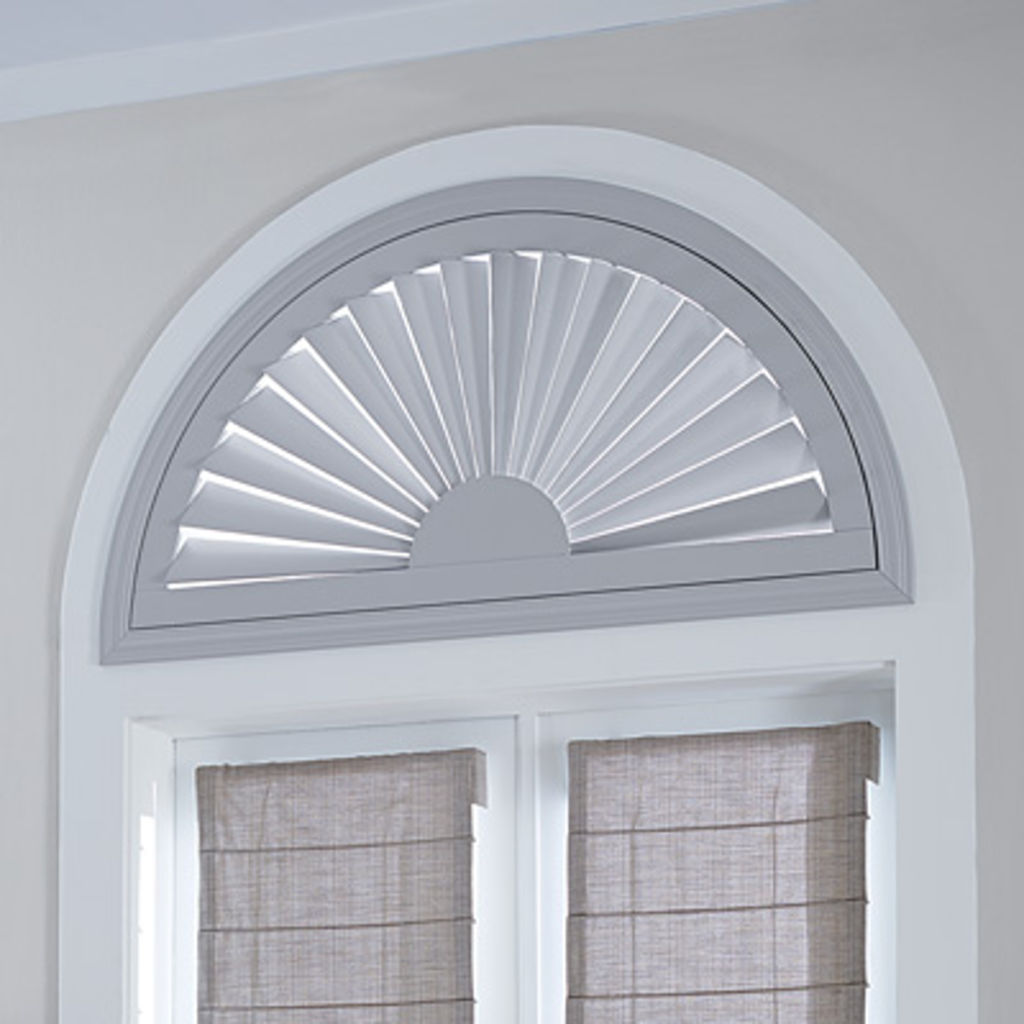
Custom Shapes and Sizes
If you’ve got arched windows or French doors, fear not. Custom plantation shutters can be measured to fit any and all irregular windows and doors to provide the same classical look your standard patio windows get.
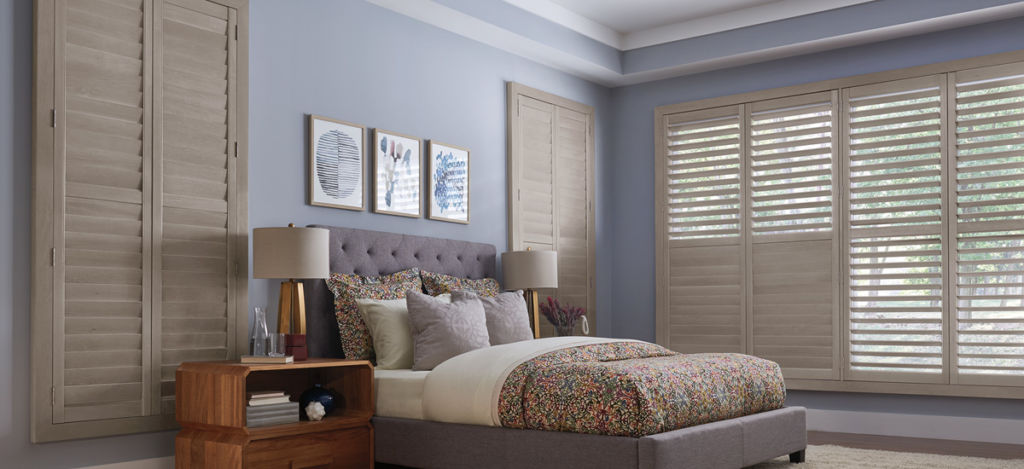
Louver Sizes
Plantation shutters come in a number of louver sizes ranging from 1 ⅞” all the way up to 5 ½”. While you can find shutters anywhere in that range, most shutters come in one of three sizes: 2 ½”, 3 ½”, and 4 ½”. The different sized louvers give different looks to a room. Larger windows in big rooms would do better with wider louvers while smaller windows like those in a bathroom might look better with a smaller louver.
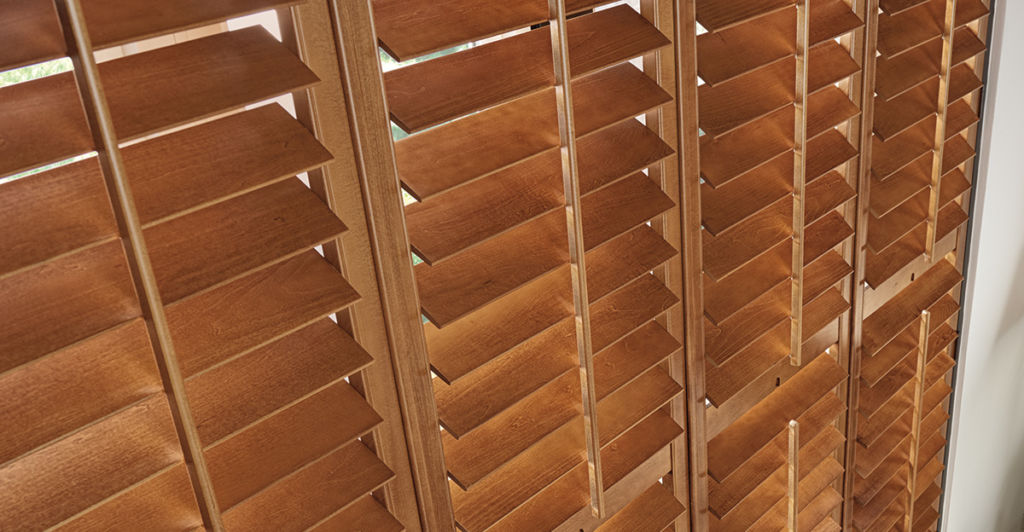
How Do I Choose the Right Shutters?
Understanding what materials shutters are made of and the different styles shutters can come in doesn’t quite nail down which shutter is right for you. Unlike most other window treatments, shutters can be a more permanent installation added to the home, making them an investment on top of a stylish upgrade.
It’s important to consider where you want your shutters to go, how much you want to spend on them, as well as the overall aesthetic you’re creating before committing to a purchase. Do you want shutters in your kitchen or your living room? Do you want genuine basswood or timber shutters, or do you want a composite alternative that could go in a high-humidity or high-traffic space? Does your home have a traditional feel, or would you prefer a more contemporary and sleek finish?
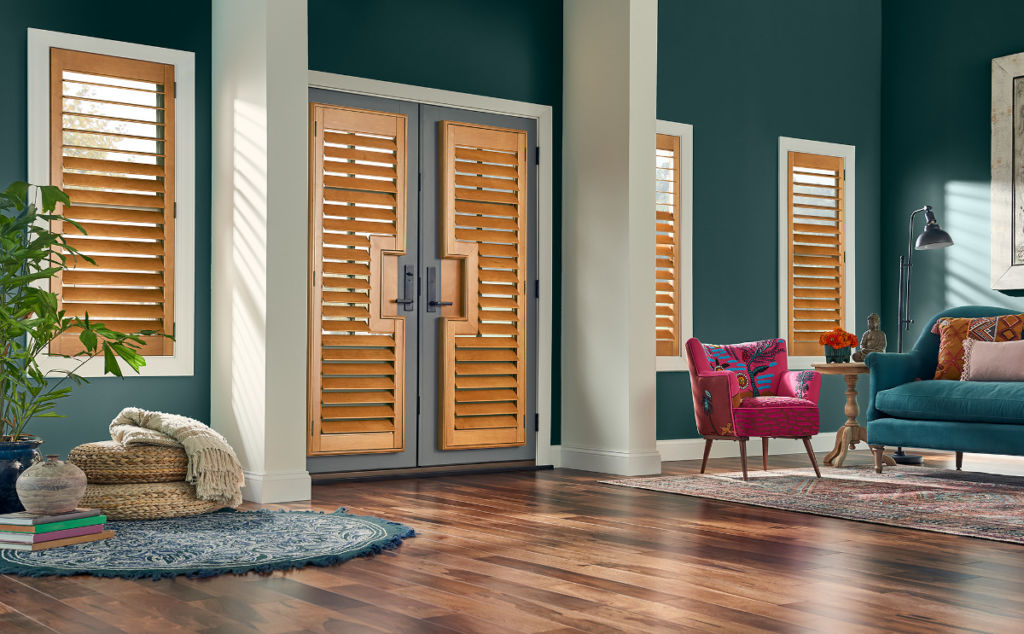
What Type of Shutters Are Best?
The “best” shutter depends on your specific situation, budget, and tastes, but there are some general rules that can define how to shop for shutters.
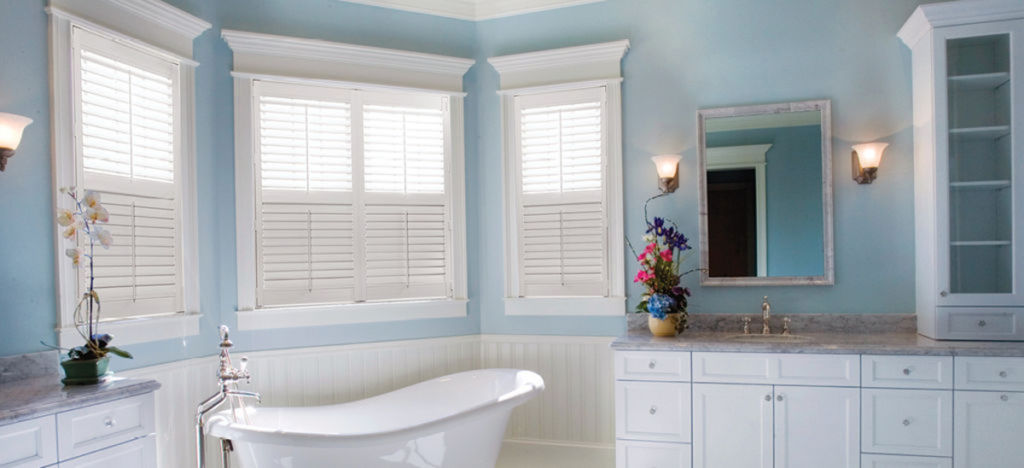
By Humidity
In high moisture environments, whether that’s in a tropical climate or a bathroom, it is advisable to opt for composite or vinyl over wood shutters. Wood shutters are lightweight and provide a great aesthetic, but the material is is difficult to maintain when moisture becomes involved.
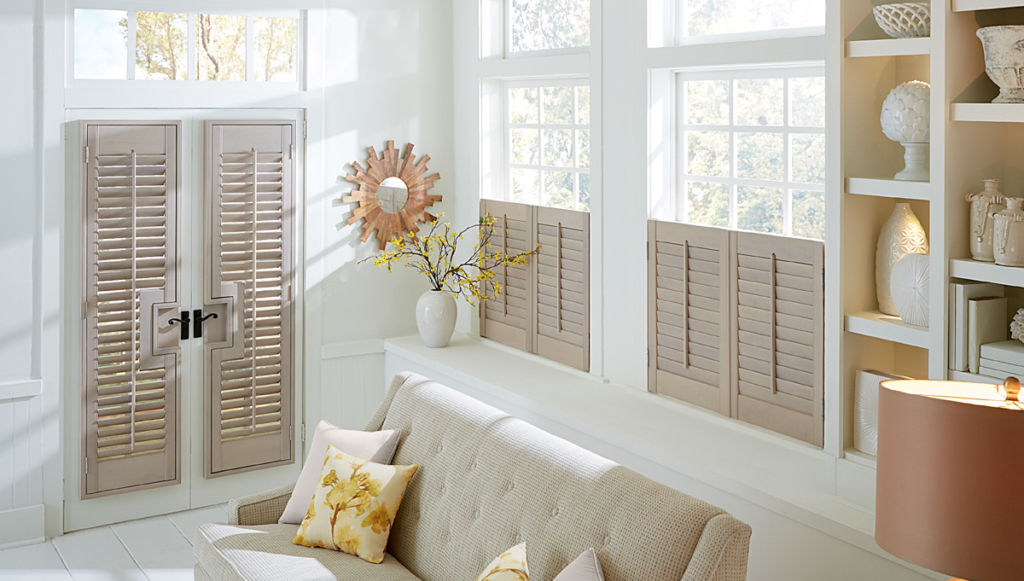
By Room
Different styles of plantation shutters are traditionally used in different rooms. Standard panels can be found just about anywhere. However, café shutters are mainly used in kitchens. Double hung shutters add tremendous value to a living room or patio’s décor, allowing beautiful light access.
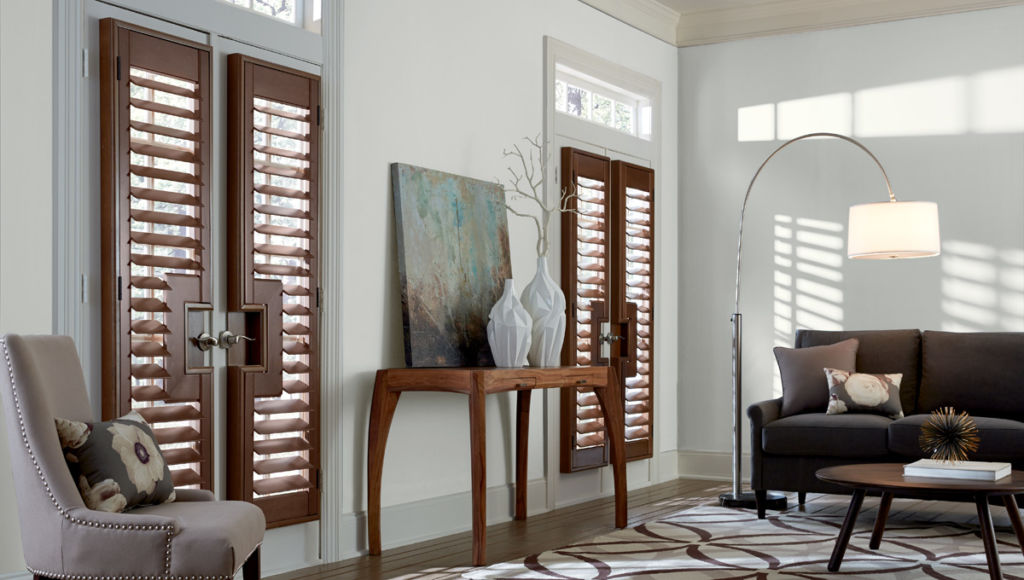
By Budget
Since shutters are some of the longest-lasting and more permanent window treatments available, they can become expensive quickly. Vinyl, faux, and composite shutters are more budget-friendly than true wood shutters. The size of your windows and number of windows that need shuttering also contribute to the overall cost.
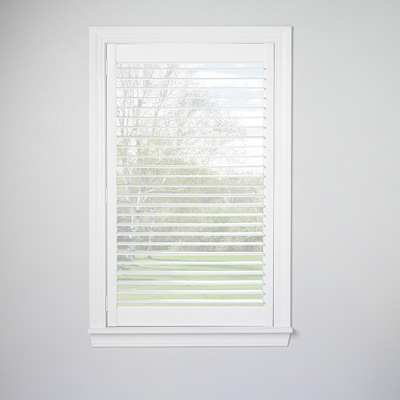
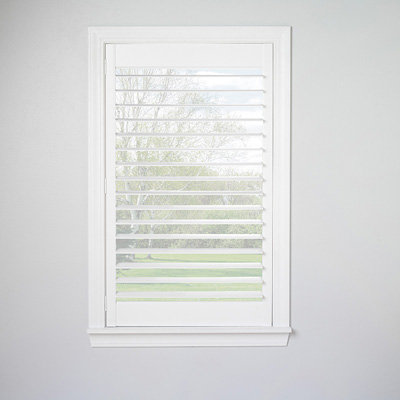
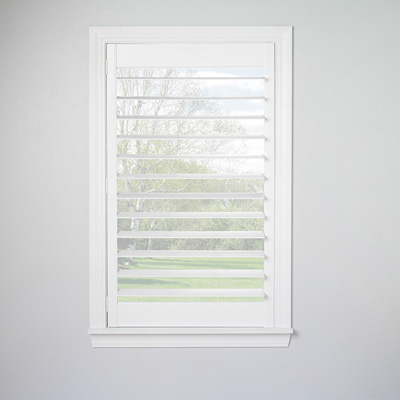
By Louver Size
Louver sizes may seem like an afterthought compared to the material or style of your plantation shutter, but the size of your shutter’s slats makes or breaks an aesthetic. The difference between 2 ½”, 3 ½”, and 4 ½” is stark. When selecting shutters, going from a 2 ½” louver to 4 ½” can completely transform a room.
Larger panels are better suited for large windows and large areas while smaller areas may benefit more from smaller slats. Large living areas may want more light access and greater insulation while your bedroom or bathroom may be more focused on privacy.
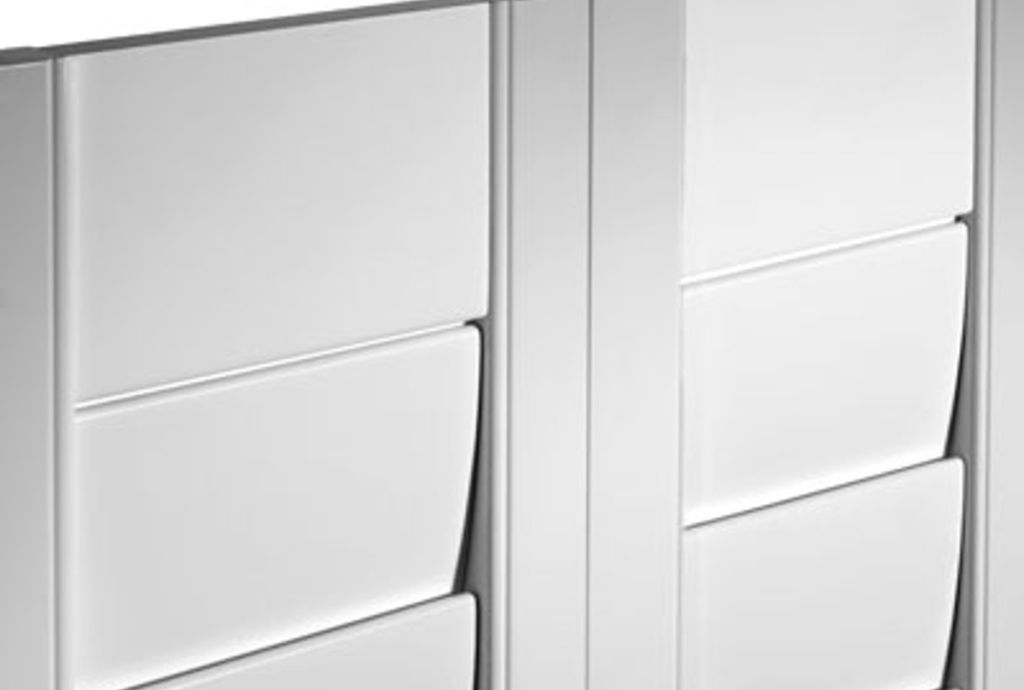
By Tilt Bar
One of the major aesthetic choices of plantation shutters is the tilt bar, a little wooden or metal bar that you use to open or close your shutter slats. While a central tilt bar gives shutter doors a traditional feel, if you want to opt for a different aesthetic, there are hidden tilt bars and even rabbited louvers that close almost flush, perfect for a minimalist décor.
If you want a tilt bar but are also looking for a more even close for light control on the slats, consider getting a tilt bar with a mouse hole or a decorative finish.
Classic and Modern Style Shutter Options
Part of the reason behind shutters’ continuing popularity is their versatility. Whether it’s the material, paint, stain and color, size, or shape, shutters come in dozens of customizable forms for all styles, classic and modern.
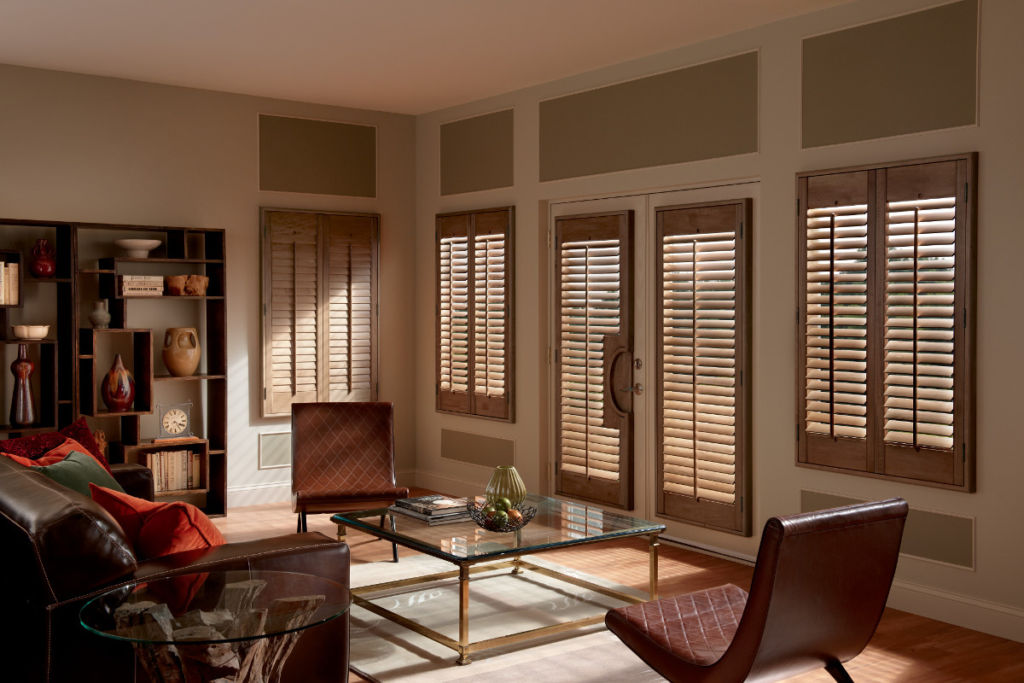
If you’re dreaming of a quaint cottage interior, nothing beats the warmth and texture of real wood shutters. Afternoon light streaming through these wood shutters gives this interior a cozy feel that is unparalleled.
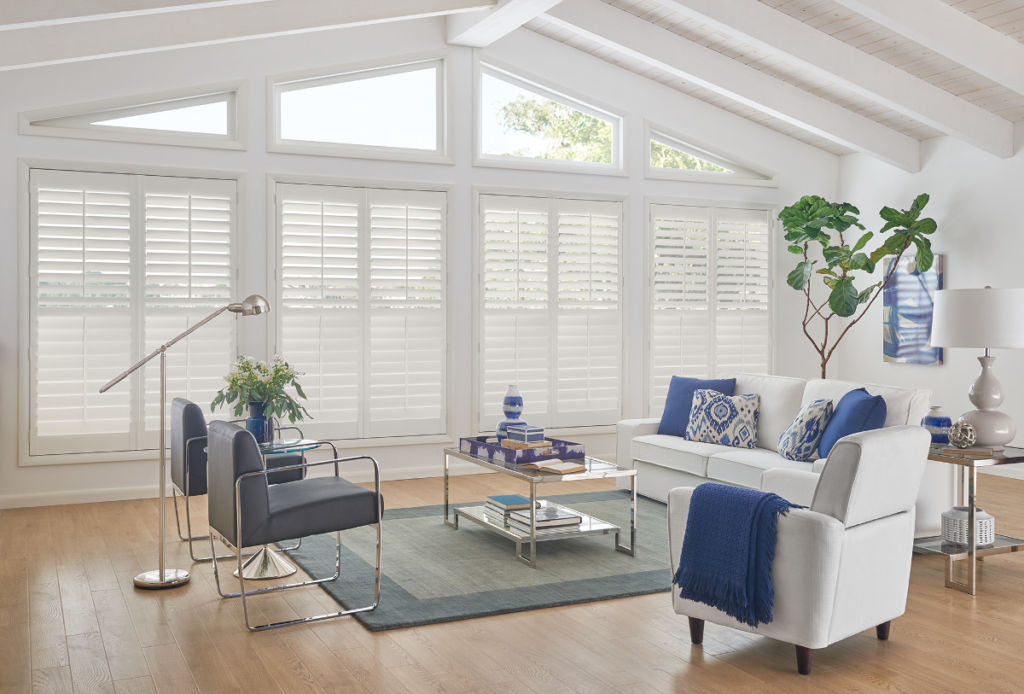
If rustic and traditional aren’t to your home’s taste, there are plenty of modern choices from painted real woods to durable faux wood shutters. This cool interior combines the bright and comforting look of shutters with an elegant, breezy color palette to create a contemporary, ocean-side atmosphere.
What Should I Look for When Buying Window Shutters?
With an idea of what shutters you’re in the market for, it’s important to ensure that you’re going to be purchasing quality plantation shutters. Because of their size, installation process, and price point, it’s important to find quality design consultants.
3 Blind Mice Window Coverings offers a wide array of customizable shutters with all the options included. We source high quality materials and offer limited lifetime warranties which extend through your window treatment’s lifetime.
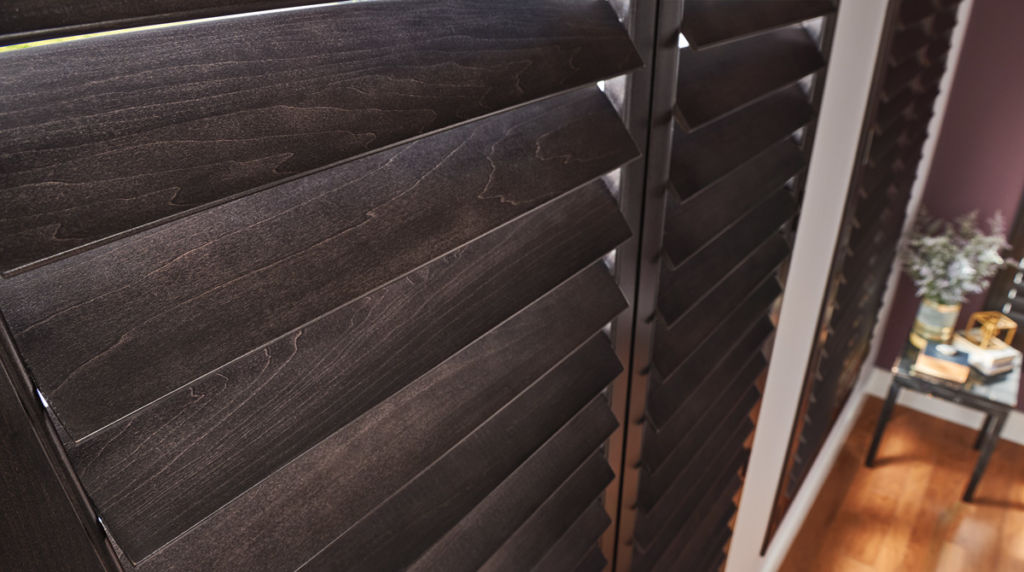
When it comes to plantation shutters, durability and functionality matter as much as style. Make sure that your interior shutters have been stress-tested to block out UV-rays. If you have pets or kids, it’s worth looking into whether your window treatments have been certified for children and pet safety.
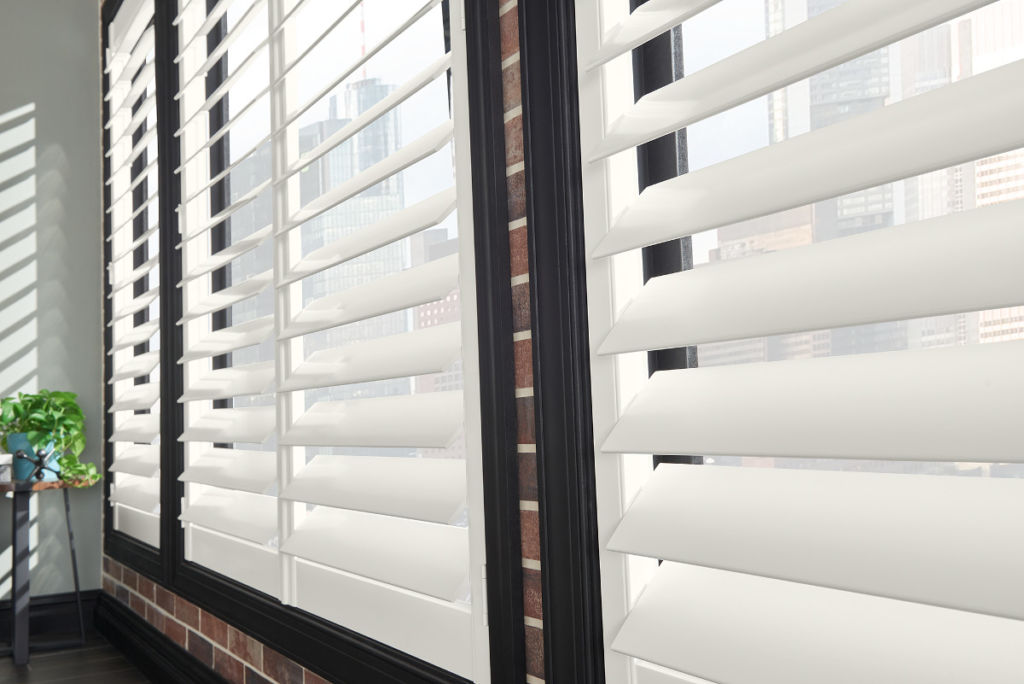
Frequently Asked Questions About Shutters
How do I know what size shutters to buy?
The size of shutter you buy depends on the size of your windows. If your window already has a trim, it’s recommended that you mount shutters on the inside of the window, therefore you should measure from the inside. If your windows don’t have molding or a trim, the size of shutters can be measured from the outside edges. If you have arched windows or French doors, it’s recommended that you get your windows measured and shutters installed custom to ensure the property measurements and safety are adhered to.
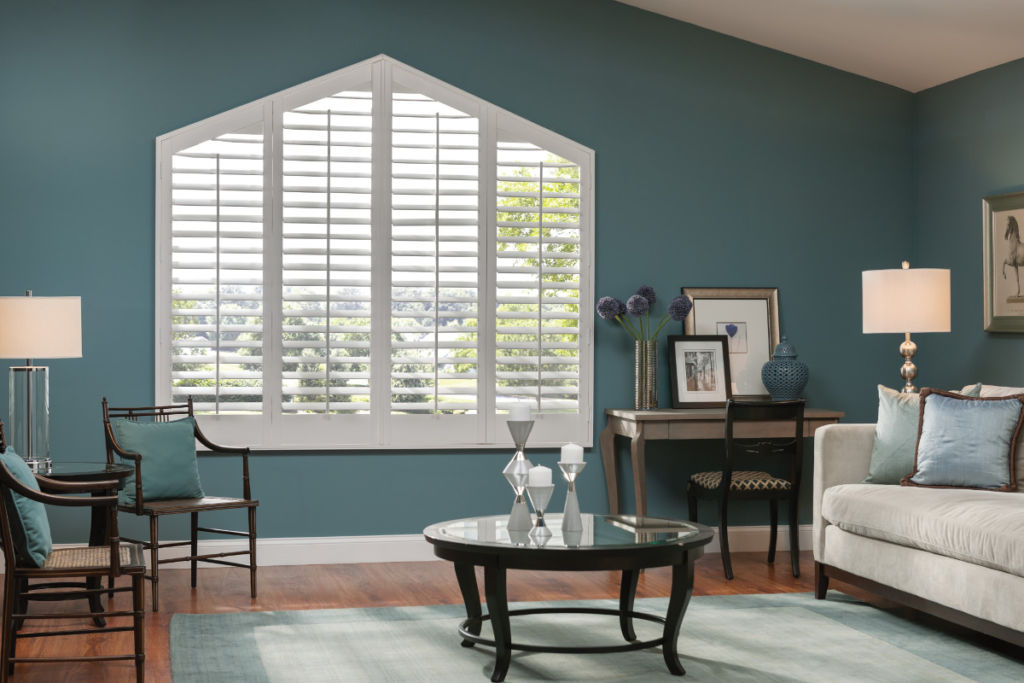
How do you measure for plantation shutters?
First, you need to decide if you want your shutters mounted inside the window frame or outside. For shutters mounted inside, your windows must be square (or rectangular), with 90 degree angles at each corner. To quickly determine this, measure diagonally from the upper left corner to lower right corner, and diagonally from the upper right corner to the lower left corner. These two measurements should be the same. If there is more than a half inch difference between the two, you’ll want to go with shutters mounted outside the window frame. Another consideration for inside-mount shutters is the window depth – you’ll need enough space to accommodate the louvers on your shutters.
For both inside and outside mounts, you’ll want to take 6 measurements:
- » Measure the height of the window at the left side, right side, and in the middle
- » Measure the width of the window at the bottom, top, and in the middle
For inside mount shutters, take these measurements inside the window frame and record the smallest of the three measurements for width and height. For outside mount shutters, take the measurements from the full area you’d like the shutters to cover and keep the largest of the three measurements for width and height.
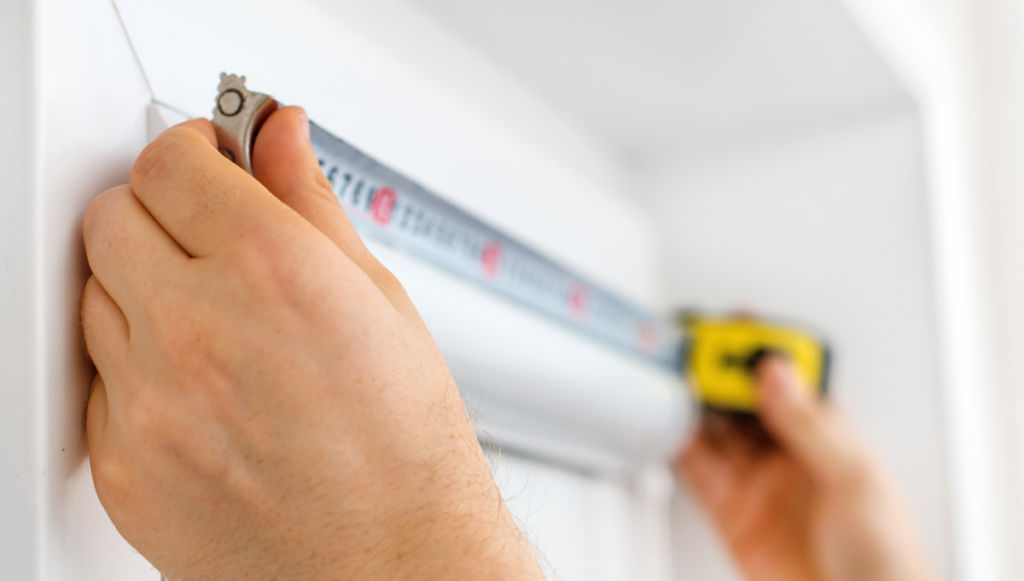
How much should I budget for shutters?
Because shutters are some of the longest lasting window treatments, their price point is higher than some simpler options. The cost to shutter an average-size window starts around $700 and can go up to $1500 per window for large windows. The price point can vary depending on material, style, size, and customizations.
While shutter installation does tend to come at premium prices, upgraded window treatments like shutters can add value to your home appraisal and even help you sell your home quicker! Quality shutters can be an investment in your home and future.
Will shutters go out of style?
Perhaps everyone’s biggest fear when upgrading their home is that the current trends may fade in a few years, leaving them stuck with a style that could look tacky.
Fortunately, shutters have been around for years and aren’t likely to go out of style anytime soon. Shutters can be found as early as ancient Greece. Interior shutters are often called “plantation shutters” because they were popularized in the American South during the 19th century.
Shutters are considered a timeless classic. With the traditional look and modern innovations to design, shutters are going to remain beautiful and elegant for the foreseeable future.
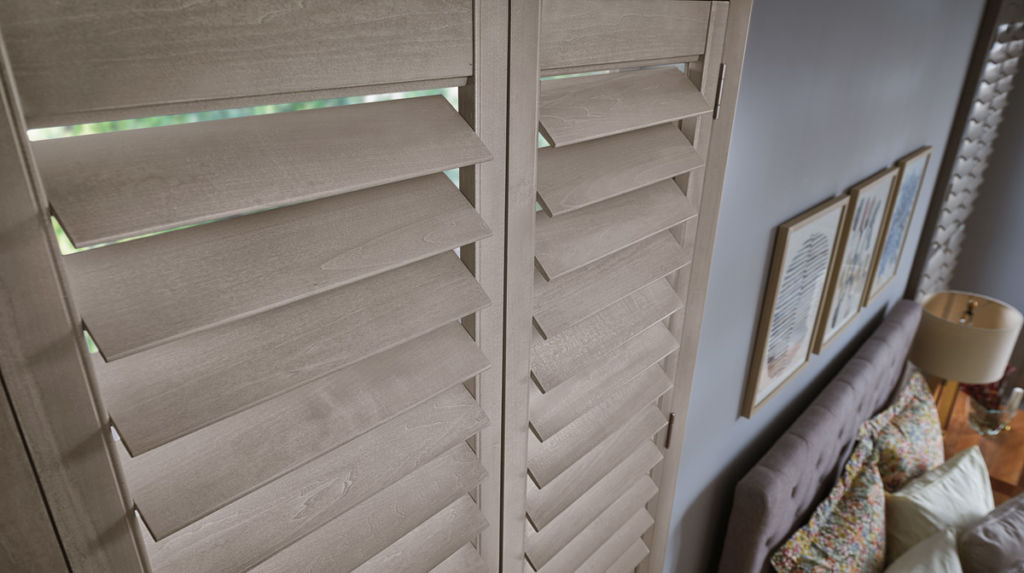
Are shutters insulating?
Shutters are a window treatment that offers full functionality. Wood shutters don’t just look good. They’re excellent at controlling the amount of light a room receives, providing privacy, insulating your home’s heat, and even insulating sound.
Because most shutters are installed along the window’s frame, they create a sealing effect. Plantation shutters are better at insulating your home than other coverings like blinds. This keeps your home cooler in the summer and warmer in the winter. Cellular shades are some of the best treatments if energy efficiency is high on your list, and shutters are a close second.
Can I upgrade my shutters?
Shutters come with plenty of customizable upgrades to match your budget and create a picture perfect home.
Hidden tilt: If you want to opt for sleek, modern interiors, the tilt bar can be moved behind the louvers so it’s not visible.
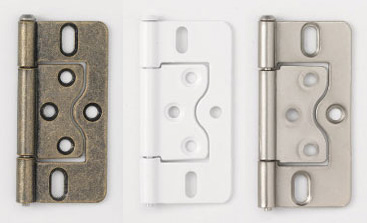
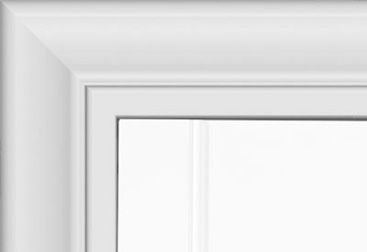
Custom hinges: Depending on the interior of your home, you may want to match your shutter hinges with your aesthetic. You can choose to have white, painted hinges, or even distressed, rugged/antique hinges.
Frames and mounts: Whether you want smooth, seamless frames or intricate and elegant panel mounts, plantation shutters can come with a variety of choices to match your home.
Motorized shutters: If you have any windows in high up places or want to fully automate your home, there are even motorized shutter options available which can open and close via remote or timer!
I need a quote on shutters